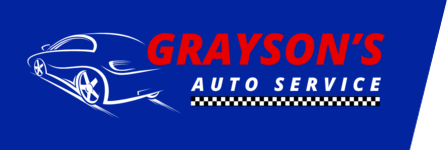GENERAL MAINTENANCE
GENERAL MAINTENANCE FOR YOUR VEHICLE
The traditional core of the automotive industry, known as the "tune-up," has undergone significant changes over time. Despite some misconceptions, contemporary vehicles still require tune-ups for optimal performance.
With the rapid advancement of technology, the processes involved in carrying out a conventional tune-up have undergone a substantial transformation. Advanced ignition and fuel systems have become standard, incorporating one or more onboard computers to regulate essential engine and transmission functions.
Failure to maintain the vehicle appropriately will hinder your ability to reach your desired destination. In the 21st Century Tune-up for modern vehicles, it is essential to inspect the following systems: battery, charging and starting engine, mechanical powertrain control (including onboard diagnostic checks), fuel ignition, and emissions.
To ensure optimal performance, fuel efficiency, and reduced emissions, the Car Care Council advises motorists to invest time in understanding their vehicles. Familiarize yourself thoroughly with the operation of all systems by studying the owner's manual. Pay close attention to indicator lights and instruments.
Getting Your Vehicle Ready for Winter
Some of the following tips can be performed by any do-it-yourselfer; others require the skilled hands of a professional auto technician.
MECHANICAL FAILURE
An inconvenience anytime it occurs - can be deadly in the winter. Preventive maintenance is a must. A well-maintained vehicle is more enjoyable to drive, lasts longer, and could command a higher resale price.
ENGINE PERFORMANCE
Get engine drivability problems (hard starts, rough idling, stalling, diminished power, etc.) corrected at a good repair shop. Cold weather makes existing problems worse. Replace dirty filters - air, fuel, etc.
FUEL
Put a bottle of fuel de-icer in your tank once a month to help keep moisture from freezing in the fuel line. Note that a full gas tank helps keep moisture from forming.e is leaving behind puddles of liquid, it's a sign you should investigate further. Examine the liquid closely. Water is usually not a concern, often originating from air conditioning condensation.
However, liquids like oil, transmission fluid (red or brown), coolant (blue, yellow, green), power steering fluid, or brake fluid (thick but clear) warrant closer inspection. A leak in one of these vital systems is likely the culprit.
Visit Grayson's Auto Service to fix the leak and replace the fluids before it worsens and affects your car's performance.
OIL
Change your oil and oil filter as specified in your manual - more often (every 3,000 miles) if your driving is mostly stop-and-go or consists of frequent short trips.
COOLING SYSTEMS
The cooling system should be completely flushed and refilled about every 24 months. The level, condition, and concentration of the coolant should be checked periodically. (A 50/50 mix of anti-freeze and water is usually recommended.) DIYers, never remove the radiator cap until the engine has thoroughly cooled! The tightness and condition of drive belts, clamps, and hoses should be checked by a pro.
WINDSHIELD WIPERS
Replace old blades. If your climate is harsh, purchase rubber-clad (winter) blades to fight ice build-up. Stock up on windshield washer solvent - you'll be surprised how much you use. Carry an ice-scraper.
HEATER/DEFROSTER
The heater and defroster must be in good working condition for passenger comfort and driver visibility. Newer models have a cabin air filter that should be replaced periodically. Check your owner's manual for the location and replacement interval.
However, these lights also serve as valuable indicators that something within your engine might be amiss. Generally, if a diagnostic light accompanies other signs like poor performance or unusual noises, it's a good idea to visit Grayson's Auto Service. If you're simply tired of looking at it, a quick check at the shop can confirm if there's an actual issue.
BATTERY
 Button
ButtonThe only accurate way to detect a weak battery is with professional equipment. Routine care: Scrape away corrosion from posts and cable connections; clean all surfaces; re-tighten all connections. If battery caps are removable, check fluid level monthly. Avoid contact with corrosive deposits and battery acid. Wear eye protection and rubber gloves.
LIGHTS
Inspect all lights and bulbs; replace burned out bulbs; periodically clean road grime from all lenses. To prevent scratching, never use a dry rag.
EXHAUST SYSTEM
Your vehicle should be placed on a lift and the exhaust system examined for leaks. The trunk and floor boards should be inspected for small holes. Exhaust fumes can be deadly.
TIRES
Worn tires will be of little use in winter weather. Examine tires for remaining tread life, uneven wearing, and cupping; check the sidewalls for cuts and nicks. Check tire pressures once a month. Check the tires when they are cold, before driving for any distance. Rotate as recommended. Don't forget your spare, and be sure the jack is in good condition.
CARRY EMERGENCY GEAR
Gloves, boots, blankets, flares, a small shovel, sand or kitty litter, tire chains, and a flash light. Put a few "high-energy" snacks in your glove box.
Getting Your Vehicle Ready For Summer
Summer's heat, dust, and stop-and-go traffic, will take their toll on your vehicle. Add the effects of last winter, and you could be poised for a breakdown. You can lessen the odds of mechanical failure through periodic maintenance. Your vehicle should last longer and command a higher resale price, too! Some of the following tips are easy to do; others require a skilled auto technician.
AIR CONDITIONING
A marginally operating system will fail in hot weather. Have the system examined by a qualified technician. Newer models have cabin air filters that clean the air entering the heating and air conditioning system. Check your owner's manual for location and replacement interval.
COOLING SYSTEM
The greatest cause of summer breakdowns is overheating. The cooling system should be completely flushed and refilled about every 24 months. The level, condition, and concentration of the coolant should be checked periodically. (A 50/50 mix of anti-freeze and water is usually recommended.) DIYers, never remove the radiator cap until the engine has thoroughly cooled! The tightness and condition of drive belts, clamps, and hoses should be checked by a pro.
OIL
Change your oil and oil filter as specified in your manual - more often (every 3,000 miles) if you make frequent short jaunts, extended trips with lots of luggage, or tow a trailer.
ENGINE PERFORMANCE
Replace other filters (air, fuel, PCV, etc.) as recommended - more often in dusty conditions. Get engine drivability problems (hard starts, rough idling, stalling, diminished power, etc.) corrected at a good shop.
WINDSHIELD WIPERS
A dirty windshield causes eye fatigue and can pose a safety hazard. Replace worn blades and get plenty of windshield washer solvent.
LIGHTS
Inspect all lights and bulbs; replace burned out bulbs; periodically clean dirt and insects from all lenses. To prevent scratching, never use a dry rag.
TIRES
Have your tires rotated about every 5,000 miles. Check tire pressures once a month; check them while they're cold before driving for any distance. Don't forget to check your spare as well and be sure the jack is in good condition. Examine tires for tread life, uneven wearing, and cupping; check the sidewalls for cuts and nicks. An alignment is warranted if there's uneven tread wear or if your vehicle pulls to one side.
BRAKES
 Button
ButtonBrakes should be inspected as recommended in your manual, or sooner if you notice pulsations, grabbing, noises, or longer stopping distance. Minor brake problems should be corrected promptly.
BATTERY
Batteries can fail any time of year. The only accurate way to detect a weak battery is with professional equipment. Routine care: Scrape away corrosion from posts and cable connections; clean all surfaces; re-tighten all connections. If battery caps are removable, check the fluid level monthly. Avoid contact with corrosive deposits and battery acid. Wear eye protection and rubber gloves.
EMERGENCIES
Carry some basic tools - ask a technician for suggestions. Also include a first-aid kit, flares, and a flashlight. Consider buying a cellular phone.
Keeping your vehicle in tune with the environment is definitely a win-win situation. Besides helping the environment, a properly maintained and operated vehicle will run more efficiently, will be safer, and will last longer - up to 50% longer, according to a survey of ASE-certified Master Auto Technicians.
The following tips should put you on the road to environmentally conscious car care.
- Keep your engine tuned. A misfiring spark plug can reduce fuel efficiency as much as 30%.
- Follow the service schedules listed in your owner's manual. Replace filters and fluids as recommended.
- Check your tires for proper inflation. Underinflation wastes fuel - your engine has to work harder to push the vehicle.
- Wheels that are out-of-line (as evidenced by uneven tread wear or vehicle pulling) make the engine work harder, too. Properly maintained tires will last longer, meaning fewer scrap tires have to be disposed.
- Observe speed limits. Mileage decreases sharply above 60 mph.
- Drive gently. Avoid sudden accelerations and jerky stop-and-go's. Use cruise control on open highways to keep your speed as steady as possible.
- Avoid excessive idling. Shut off the engine while waiting for friends and family.
- Today's vehicles are designed to "warm up" fast, so forget about those five-minute warm-ups on cold winter mornings.
- Remove excess items from the vehicle. Less weight means better mileage.
- Store luggage/cargo in the trunk rather than on the roof to reduce air drag.
- Plan trips. Consolidate your daily errands to eliminate unnecessary driving. Try to travel when traffic is light to avoid stop-and-go conditions.
- Join a car pool.
Remember, how your car runs, how you drive it, and how its fluids, old parts, and tires are disposed of all have serious consequences on the environment.

